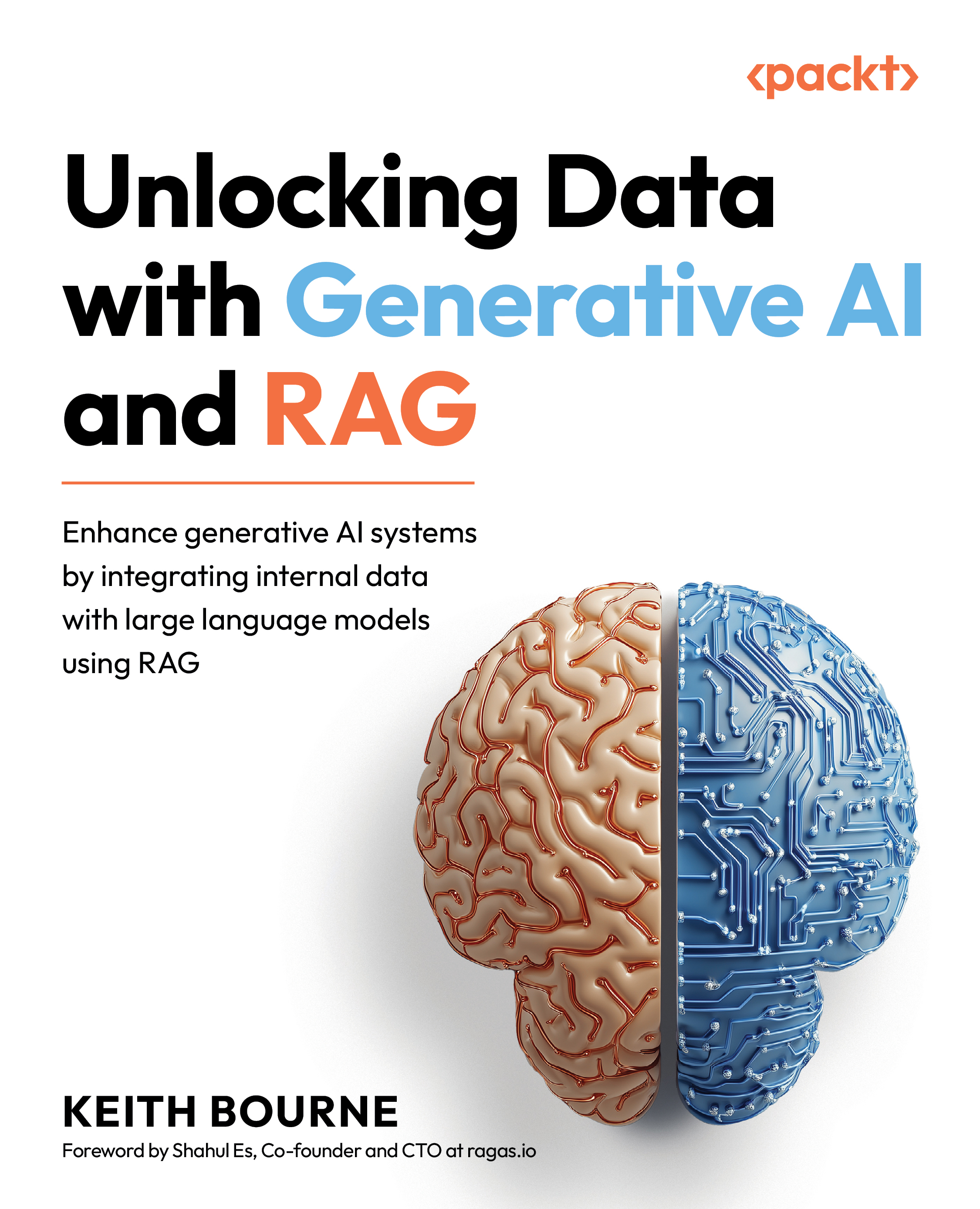Part 2 – Components of RAG
In this part, you will learn about key components of a RAG system and how to implement them using LangChain. You’ll explore interfacing with RAG using Gradio to create interactive user interfaces, the crucial role of vectors and vector stores in enhancing RAG performance, and techniques for evaluating RAG quantitatively and with visualizations. Additionally, you’ll dive into using LangChain components such as document loaders, text splitters, and output parsers to further optimize your RAG pipeline.
This part contains the following chapters:
- Chapter 6, Interfacing with RAG and Gradio
- Chapter 7, The Key Role Vectors and Vector Stores Play in RAG
- Chapter 8, Similarity Searching with Vectors
- Chapter 9, Evaluating RAG Quantitatively and with Visualizations
- Chapter 10, Key RAG Components in LangChain
- Chapter 11, Using LangChain to Get More from RAG
































































